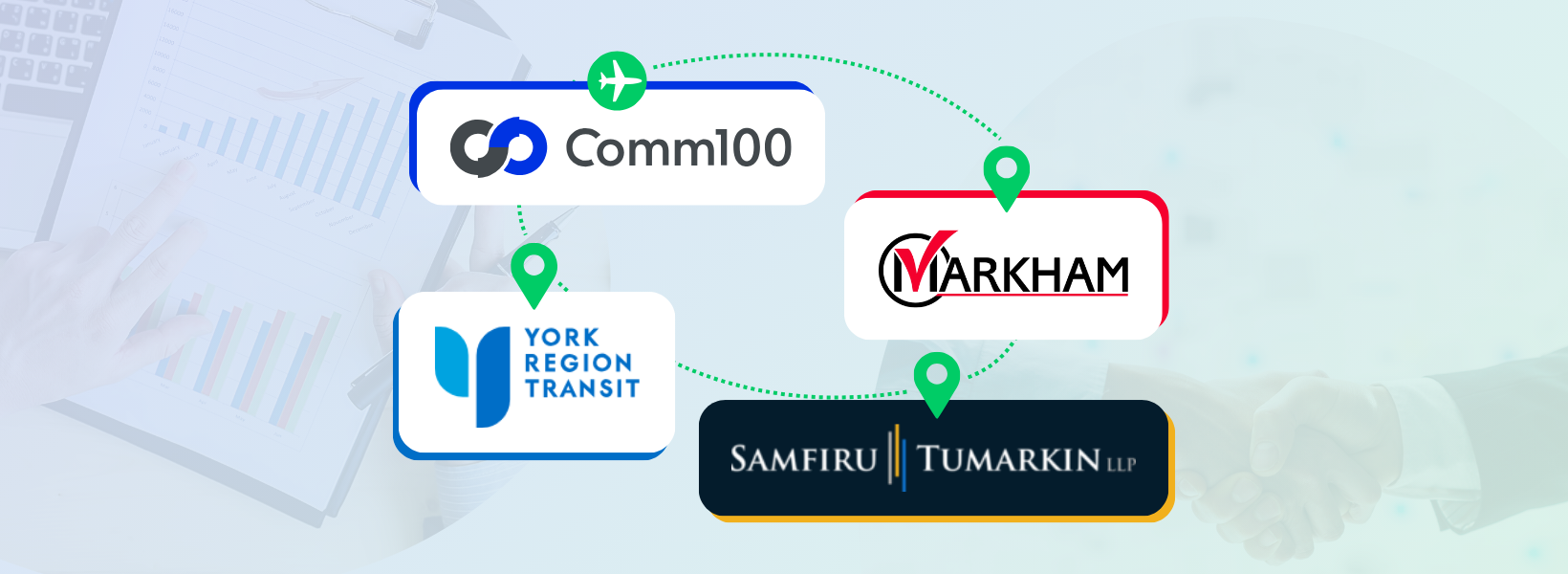While the internet has opened up new markets for businesses around the world, it has also allowed competition from companies globally. In the 21st century, many companies are facing hordes of competition in almost every market.
This level of competition has increasingly led companies to research for new ways to get customers while retaining their existing customer base as well. Customers, being more informed than ever due to technology, now expect a certain level of customer service at all times. They assume that your team will have an up to date CRM system and that you will have the tools in place to not only respond to their concerns quickly but also address their issues.
In today’s economy, customers can easily compare your product with others online. Price is undoubtedly a factor in their decision, but perhaps a more significant factor is the level of expertise that your team offers. What service are you going to provide after the sale to differentiate your company from the competition? In order to provide high-level customer service while monitoring return on investment, companies need to use some metrics to measure success.
Understanding Customer Experience
Customer experience (CX) is not a singular event, but the compounded impact of all touch points a customer encounters in their journey. A report released by Forrester explains that 72% of enterprises have made customer service management a top priority, showing just how much organizations are prioritizing the customer experience.
Different industries, and often different companies in the same industry, have entirely different customer journeys – meaning that customer experience is tied to the enterprise. Because of this, CX managers first have to identify what a positive customer experience looks like for their clients and target market. Next, changes that are likely to have an impact are made to the customer journey. This is an intensive and ongoing process that can take a lot of time and resources.
It is important to measure customer experience, not only to avoid wasting resources but also to ensure you’re truly improving the experience. The three metrics used for measuring customer experience are NPS, CSat, and CES; the latter measures customer effort and the rest are used to measure customer satisfaction. All these involve asking a customer to answer a simple question after they contact your business and get their issue resolved. Let’s explore these three metrics, starting with CSat.
Customer Satisfaction Score (CSat)
CSat is widely popular key performance indicator (KPI) that was conceived in the 1970s and is used to measure customer satisfaction. This KPI has survived through all these years because of its sheer simplicity. CSat involves asking a straightforward question such as “How satisfied were you with the experience?” accompanied by a survey scale.
There is no single right answer on the scale that you can and should use, but most of the surveys choose a 1-5 scale or a 1-10 scale. A score of 1 means the customer is very unsatisfied and the higher numbers indicate that they are satisfied. Businesses around the world and in a variety of different industries and verticals use Customer Service Surveys with questions of this nature to determine the level of service they are providing to their customers.
While surveys tend to measure more than just any one single issue, each question can be tied to a specific individual component of service, for example, a new self-serve portal.
Powerful live chat software
Offer real-time, personalized, efficient support that your customers and agents will love at 1/3 the cost of voice support.
Learn more
Comm100 Live Chat
Positives of CSat
- Build trust – Probably the most significant advantage of a CSat survey is that it demonstrates to your customers that you value their opinion. Many customers will be happy to answer when asked to provide feedback. Asking your customers for their opinion creates the impression that you care about them, further strengthening their trust in you. If you make decisions using this feedback, it is far easier to keep long-term customers.
- Determine trends – Using the same survey multiple times will provide much-needed insight into your customers’ habits. A survey asked over multiple time periods allows you to compare data and use previous years’ data as a benchmark.
- Real-Time feedback – Because of the simplicity of CSat surveys, you can use them to ask about certain aspects of your business and get instant feedback. Another huge benefit of immediate feedback is getting quick reactions to a new feature or service. If it’s not well received, such a feature can be changed quickly, helping you to avoid losses in the long run.
Negatives of CSat
- Gives short term feedback – CSat questions generally are interaction-focused – meaning they ask customers to rate particular experiences or touchpoints, and not their impressions of your business as a whole.
- Oversaturation – Customers get hit right and left with surveys when browsing online. Although they might be trivial and quick to answer, many people are already desensitized and don’t want to do them. Beware of bombarding your customers with surveys that can irritate them. Customers irritated by being asked for feedback can undermine your CSat scores and response rates.
- Invasion of privacy – Again, the flood of unsolicited emails, sales calls, and spam emails have eroded many customers’ confidence in companies. People who are asked to fill out a survey over the web or phone may suspect they are being tracked or targeted. This leads to hesitation in giving out private contact information for fear of getting spam emails and unwanted promotions. You, therefore, have to assure them that the information they give out will not be used or given to other organizations.
Net Promoter Score (NPS)
Net Promoter Score was developed to replace the CSat score and overcome the disadvantages of the KPI.
NPS can offer insight over the longer term, unlike the CSat score. NPS involves asking the customer how likely they are to recommend your business to family and friends. This is done through surveys usually on a scale of 1 -10 with a straightforward question such as, “How likely are you to recommend this product (service or business)?”
Depending on the answer given, the NPS score allows you to categorize customers into three groups.
- Promoters – These are customers that score a 9 or 10 on the survey.
- Passives – A customer scores either a 7 or an 8.
- Detractors – Anything below a 6.
NPS is calculated by subtracting the percentage of detractors from the percentage of promoters. After asking about the likelihood of referring your business, a follow-up question is asked, framed something like: “What is the most important motivation/ reason for your answer?”
NPS scores provide valuable insight into implementing new strategies by dissecting answers and profiling customers based on their responses. A study conducted by Bain & Company found that companies with profitable and sustainable long-term organic growth generally have NPS scores that are two times higher than their industry competitors.
Positives of NPS
- Intuitive and straightforward – NPS, just like CSat, is simple enough that majority of your customers won’t face any difficulties in answering the questions. Management also finds it quite easy to calculate the score, saving a lot of time in the process.
- Provides valuable insight – When launching a new product or service, management usually needs to know how well the public receives the product. The NPS score gives insight on whether the customers like the new product/service being developed. This type of insight can motivate organizations to be more customer-centric and produce products that customers actually want.
Negatives of NPS
- Negative NPS scores – Sometimes the NPS tests produces a negative score. This is common, especially at the start of CX initiatives, and shouldn’t cause panic. However, a negative score in itself can look alarming, and on its own it offers no clue about the underlying problem that should be fixed to improve the score.
- NPS is not a magic bullet – As previously mentioned, a negative NPS score does not tell you what the problem is or what you need to fix. Since many Fortune 100 companies use the NPS score, it’s easy for companies to wrongly take NPS as the ultimate test of customer satisfaction. This over-reliance is the main reason why NPS doesn’t work for many companies.
- Do what you say you’re going to do – It is good to acknowledge both good and bad feedback. However, customers want to see that their feedback has been taken into consideration and that it has inspired changes. Ideally, you should have a process to incorporate feedback into future plans.
Customer Effort Score (CES)
The newest metric in our list, CES was developed by CEB Global in 2010 when it became apparent that customer satisfaction was not the primary motivation behind customer loyalty. This metric determines how much or how little effort a customer used in a transaction, interaction or other communication channels with the company.
Instead of focusing on increasing customer satisfaction and going over and above with the customer experience, it focuses on reducing the effort expended by a customer. The score is preceded by the question “How much effort did you personally have to use to complete your request?” A scale of 1 to 5 is normally used, with 1 representing the least effort and 5 depicting maximum effort.
Positives of CES
- Useful for predicting the future – CES is better than both NPS and CSat at predicting the spending behavior of your customers in the future. According to CEB, 94% of customers who reported having used little effort claimed they could buy again, while a whopping 88% confirmed that they would increase their spending.It is also a good indicator of which customers will defect, since 96% of customers who claimed they exerted a lot of effort ended up becoming disloyal.
- Easy to act on – CES is an excellent metric to pinpoint areas of weakness in your company. Because it clearly highlights the pain points in your customer journey, you can easily predict what needs changing.
Negatives of CES
- Who’s influencing who? – Although CES gauges general effort expended, you cannot measure the influence a product, price or competitors have over your customers. Also, CES is based on the effort of a transaction, but does not provide information about the relationship you have with your customers.
- High effort isn’t always your fault – CES also has its shortcomings. For example, a customer might put too much effort into a transaction that your company could never have fulfilled in the first place – for example, trying to buy a product that you would never sell, or trying to make a piece of software work with functionality it was never shipped with. They will end up dissatisfied and rate the effort highly, but it may be that the effort they expended isn’t something you could have ever changed. This can distort the results.
What is your experience with CES? Have you started using it in your organization yet, or are you using CSat and NPS to measure your customers? Let us know in the comments below.
Download now: How to Create Customer Satisfaction Surveys: Ready-Made Templates, Questions & Tips
Customer satisfaction surveys are an essential tool for any manager looking to drive customer service improvement. The eBook contains tips and techniques to help you get your survey off the ground, whether you’re creating a generic customer satisfaction survey or are looking for something more specialized.
Download Now
eBook








